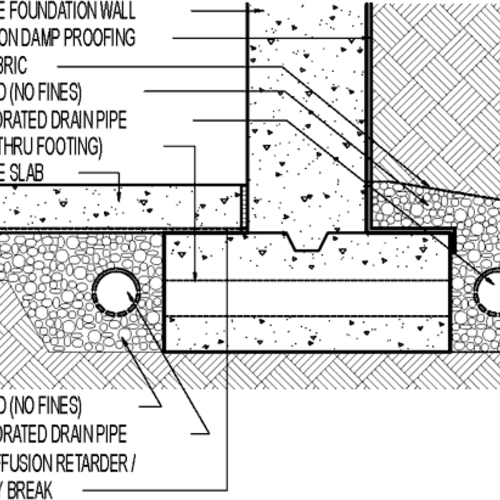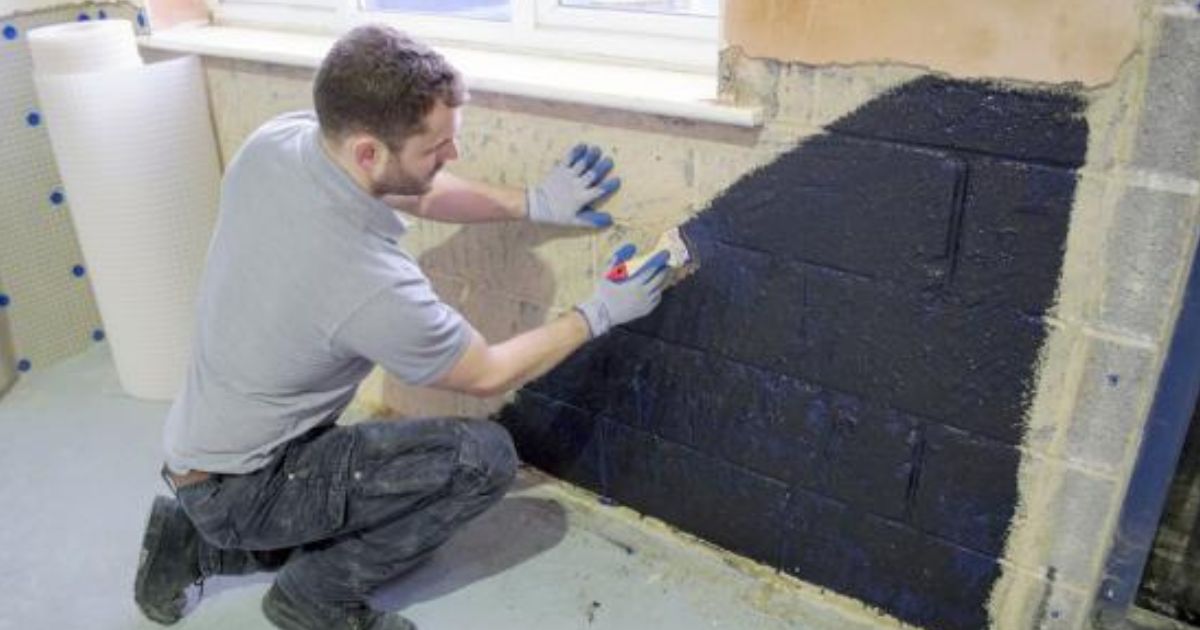Do you need a professional moisture assessment? Find out with damp proofing newcastle
Do you need a professional moisture assessment? Find out with damp proofing newcastle
Blog Article
Discovering the Numerous Methods and Solutions for Effective Damp Proofing
Dampness in buildings positions significant challenges to both architectural integrity and interior air high quality. Numerous strategies and remedies have actually arised to fight this prevalent problem. From typical damp-proof membranes to innovative chemical therapies, each technique supplies one-of-a-kind advantages. Comprehending these choices is essential for efficient wetness control. Picking the right remedy depends on details structure conditions and needs, motivating additional expedition into the most effective moist proofing strategies readily available.
Comprehending the Reasons For Moisture
Although wetness can develop from numerous sources, understanding these causes is essential for efficient removal. Commonly, wetness stems from three main resources: climbing wet, penetrating moist, and condensation. Climbing moist occurs when groundwater takes a trip up-wards via permeable materials, such as brick or rock, frequently as a result of an absence of a reliable barrier (mould removal newcastle). Passing through moist is usually brought on by external elements, consisting of roofing system leaks, faulty seamless gutters, or damaged wall surfaces, permitting water to penetrate a building. Condensation, on the various other hand, arises from excess wetness in the air, usually exacerbated by poor ventilation and temperature level differences, bring about water beads forming on surface areas. Identifying these underlying concerns is vital, as each sort of moisture requires a customized technique for remediation. Appropriate analysis helps in establishing one of the most effective remedies, ultimately guarding the structural integrity of a structure and enhancing interior air high quality
Standard Damp-Proof Membrane Layers

Chemical Damp-Proofing Solutions
Chemical damp-proofing remedies supply an innovative technique to stop wetness breach in buildings. These techniques generally entail the application of liquid chemicals that permeate masonry and form an obstacle versus rising moist. Generally utilized chemicals consist of silanes, siloxanes, and other water-repellent representatives that react with surface materials to produce a hydrophobic layer.The application procedure normally calls for drilling holes into the walls, injecting the chemical option, and permitting it to cure. This technique is specifically helpful for older frameworks where traditional damp-proof membranes may be unwise. In addition, chemical damp-proofing can be less disruptive and a lot more cost-efficient than comprehensive restoration projects.While reliable, these remedies rely on proper application and ecological problems for peak performance. Regular maintenance and tracking are important to ensure the durability of the damp-proofing treatment. In general, chemical damp-proofing represents a flexible choice for guarding structures against moisture-related damages
Tooth Cavity Wall Building And Construction Methods
Dental caries wall building techniques use many advantages, particularly in moisture control and energy performance. By including an air void between two layers of stonework, these walls successfully reduce water ingress while improving insulation. This combination not just safeguards structures from moisture but additionally adds to reduced energy intake.
Benefits of Dental Caries Walls
When thinking about effective wet proofing methods, the benefits of dental caries walls stand out plainly. Cavity walls are composed of two separate layers, developing an air void that successfully lowers wetness penetration. This layout minimizes the danger of moisture, as the external wall surface functions as an obstacle against rainfall and water access. Additionally, tooth cavity wall surfaces enhance thermal insulation, which adds to power effectiveness by lowering heat loss. They additionally offer audio insulation, helping to produce a quieter interior environment. The air void permits for air flow, which assists in dampness control and decreases the probability of mold and mildew development. These advantages not just enhance the general comfort of a building however likewise contribute to its longevity and architectural honesty.
Moisture Control Approaches
Reliable wetness control approaches are crucial in dental caries wall construction to ensure long-term defense against moisture. One primary technique entails the unification of weep openings, which promote water drainage from the tooth cavity, protecting against build-up. Additionally, making use of breathable membrane layers can assist handle dampness levels while allowing caught vapor to get away. Correct positioning of insulation is likewise crucial, as it should not block drainage paths. Additionally, guaranteeing that the external fallen leaves of the cavity wall are constructed with waterproof materials boosts general resilience. Normal upkeep checks are necessary to determine any kind of clogs or damages early, safeguarding the structure's integrity. Eventually, a mix of these strategies forms a durable protection versus dampness breach in cavity walls.
Insulation and Energy Effectiveness
Insulation plays a crucial function in boosting power performance within dental caries wall surface building and construction. By including shielding products, these wall surfaces develop a thermal obstacle that decreases warmth loss and lowers power intake. Efficient insulation not just aids keep a secure indoor temperature but also mitigates the threat of moisture, as it protects against condensation within the wall surface cavity. Different techniques, such as making use of inflexible foam boards or mineral woollen, can be utilized to achieve perfect insulation performance. In addition, appropriate installation is important to ensure that spaces and spaces are decreased, which can or else jeopardize power performance. Eventually, a well-insulated tooth cavity wall contributes significantly to general sustainability and lowers cooling and heating prices for home owners.
Outside Damp Proofing Methods
Outside damp proofing approaches are necessary for safeguarding structures from moisture seepage. 2 efficient methods include the application of waterproof membranes and the installation of French drains. These services help mitigate water build-up and protect the stability of buildings.
Waterproof Membrane Application
While numerous approaches exist for stopping wetness access, the application of water resistant membranes stays a highly efficient outside moist proofing technique. These membranes are generally made from products such as polyethylene, rubber, or changed bitumen, supplying a durable obstacle versus water infiltration. The installment process involves applying the membrane to the outside surface areas of structures or wall surfaces, ensuring complete protection to stop leakages. Correct adhesion and sealing at joints are vital to maximizing efficiency. Water-proof membrane layers can be used in numerous forms, including liquid coverings and sheet membranes, enabling versatility based upon the certain demands of the structure. This method not only protects structures from moisture however likewise enhances their longevity and structural integrity.
French Drainpipe Installment
One reliable approach for managing groundwater and avoiding moisture accumulation around a structure's structure is the setup of a French drain. This drainage system consists of a trench filled with gravel and a perforated pipeline that redirects surface area water away from the foundation. Proper setup requires mindful planning, guaranteeing that the drainpipe slopes far from the structure to promote ideal water circulation. Furthermore, the place of the drainpipe is crucial; it should be positioned in locations vulnerable to merging or excess wetness. Normal upkeep, including cleaning debris from the crushed rock and making sure the pipe continues to be unblocked, is essential for long-term effectiveness. Eventually, a well-installed French drainpipe can substantially minimize the risk of water-related problems in structures and basements.
Inside Waterproofing Methods
Interior waterproofing techniques are essential for securing a building's interior from wetness infiltration and possible water damage. These methods typically include the application of customized materials and methods made to create a dampness barrier within the structure. One typical method is using waterproof finishes or sealants on walls and floorings, which stop moisture from penetrating surfaces.Additionally, installing indoor water drainage systems, such as sump pumps, can successfully take care of water buildup in basements and crawl areas. An additional approach entails the use of vapor barriers, which are installed to inhibit moisture movement from the ground into living spaces.Moreover, resolving any kind of splits or voids in wall surfaces or structures with ideal sealers ensures a comprehensive defense against water invasion. By executing these interior waterproofing methods, homeowner can substantially reduce the risk of mold and mildew development, architectural damages, and various other moisture-related problems. Appropriate execution of these techniques is essential for long-term defense and structure stability.
Routine Maintenance and Examination Practices
Normal upkeep and examination techniques are crucial for guaranteeing the lasting performance of moist proofing solutions in any kind of structure. Routine checks enable homeowner to determine very early signs of wetness invasion, such as peeling off paint, mold development, and stuffy smells. These indications can signify underlying issues that need immediate attention.Inspections ought to be conducted at the very least each year, concentrating on at risk areas like basements, crawl rooms, and outside walls. During these assessments, homeowner should analyze sealants, drainage systems, and ventilation to verify they work correctly.Additionally, maintaining rain gutters and downspouts is essential, as stopped up systems can lead to water buildup near the structure. Executing a normal upkeep schedule, together with prompt repairs, can considerably prolong the lifespan of damp proofing procedures and shield the structural integrity of the structure. Aggressive measures eventually add to the overall health and wellness of the living environment.
Often Asked Inquiries
Just How Long Does Damp Proofing Commonly Last?
The duration of damp proofing effectiveness varies, normally lasting between 20 to 50 years. Factors such as application quality, environmental conditions, and maintenance techniques considerably affect the long life of the damp proofing treatment.

Can I Damp Proof My Home Myself?
The specific considered the expediency of do it yourself damp proofing. With correct study and the right materials, it is possible. However, they also recognized the significance of expert support to ensure resilient efficiency and protect against future issues.
What Are the Signs of Inadequate Damp Proofing?
Indicators of inefficient damp proofing consist of consistent moldy smells, noticeable mold growth, peeling off paint, moist patches on wall surfaces, and timber decay - damp proofing newcastle. Home owners must deal with these concerns without delay to avoid further damages and health and wellness concerns
Does Damp Proofing Affect Indoor Air Top Quality?

Just How Much Does Expert Damp Proofing Cost?
Professional moist proofing prices vary significantly, usually varying from $1,000 to $5,000 depending on the property's size, the level of the damp issue, and selected approaches. Each situation needs a customized assessment for accurate prices. Commonly, moisture stems from three main resources: increasing moist, passing through moist, and condensation. When taking into consideration effective damp proofing techniques, the benefits of here dental caries wall surfaces stand out prominently. Outside moist proofing approaches are important for securing frameworks from dampness seepage. While numerous approaches exist for avoiding wetness ingress, the application of water resistant membranes stays a very effective outside wet proofing method. Signs of inefficient wet proofing consist of persistent moldy smells, noticeable mold and mildew development, peeling off paint, moist patches on walls, and wood degeneration.
Report this page